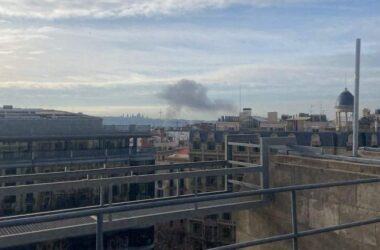Firefighters in South Korea have been forced to deploy helicopters as the country’s largest wildfires reignited over the weekend.
The wildfires, which have already destroyed over 2,900 homes in the southeastern regions, flared up again on Saturday, leading to a renewed effort to control the spreading flames. So far, 30 people have lost their lives, and many others have been injured, authorities reported.
The fires, which have already burned vast swathes of land in the southeastern provinces, were reignited in Andong, a city in North Gyeongsang province, which bore the brunt of the destruction. “It seems that the remaining embers have flared up a bit,” said a Korea Forest Service official.
To combat the revived fires, South Korean officials dispatched eight helicopters to Andong on Saturday. Despite the flames being initially brought under control the day before, authorities continue to battle smaller blazes. “We plan to deploy more helicopters to the area in Andong,” the official added. The fires had started a week ago and had ravaged the region for days.
The fires have left a significant mark, destroying not only thousands of homes but also historical landmarks like the Gounsa temple complex in Uiseong, which dates back to the 7th century. In total, over 35,000 hectares of forest have been burned.
Officials said the fires, exacerbated by high winds and dry conditions, have particularly affected elderly residents, with many of the victims being seniors. Tragically, a helicopter pilot in his 70s lost his life after his aircraft crashed while attempting to battle the blaze on Wednesday.
The fires were triggered by an accidental spark from a grave visitor and a brush cutter, according to the interior ministry. Although it’s difficult to directly attribute the fires to climate change, experts agree that global warming is making such events more frequent and severe.
“We plan to deploy more helicopters to the area in Andong,” the official said, emphasizing that the scale of the operation means full extinguishment could take some time.
Local resident Lee Hye-young, a 65-year-old woman from Andong, expressed her trauma from the event: “It was really scary to see the sparks flying around all at once. While living in North Gyeongsang, I never thought that such a large disaster would strike us.”
The region has endured a prolonged drought, with below-average rainfall compounded by record-high temperatures in 2024, intensifying the severity of the wildfires.




